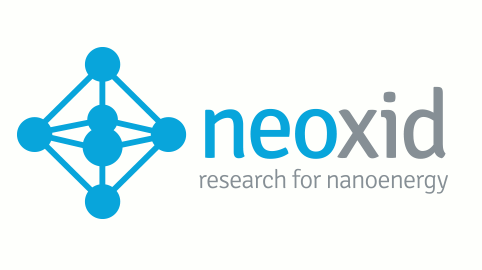nano-analytics
neoxid GmbH specializes in the analysis of the structure, roughness and topography of surfaces and coatings as well as the composition of materials, materials and products in the range from micrometers to nanometers.
Take advantage of customized services: from the simple routine to the complex analysis - in our modern laboratory with diverse examination methods and analysis procedures, such as scanning electron microscopy (SEM) with connected EDX spectrometers (EDX) for micro area analysis or atomic force microscopy (AFM) for surface imaging.
Would you like to have the surface structure of a sample examined? Or its composition? Or does your coating stick poorly and you want to find out why?
We are an innovative team of physicists, chemists and engineers with decades of experience in the field of surface technology and analytics and can help you. In consultation with you, we create an individual workflow for carrying out the various analytical procedures. In a comprehensible and result-oriented final report, we summarise our assessments and evaluations in a nutshell. We are always at your disposal for questions and advice.
Here you will find an overview of our analytical methods with further information:
measurement of thermal emission
LOW-e
Absorbed energy causes heating, which leads to radiation. The emissivity indicates how much radiation a body emits compared to the ideal radiator. We offer measurements of reflectance and emissivity at 82 °C / 180 °F in the range 3-30 µm of any coating as an integral value. Samples can be flat (sample size any, at least 5.5 x 5.5cm) and tubes can also be measured. The method is non-destructive. By comparing different coatings, calculations regarding energy savings/gains can be made.
Click here for details
measurement of dielectric strength
dielectric strength
To test the electrical insulation effect, the breakdown voltage can be measured in accordance with DIN EN ISO 2376. Flat and almost flat surfaces can be measured. In modified form with "wet" contacting, the finest cracks in insulating layers can be detected.
Click here for details
Scanning Electron Microscopy
SEM/EDX
A primary electron beam is generated with the aid of an electrode cathode and acceleration towards the anode, and then focused as finely as possible on the surface of the sample to be examined by means of subsequent electromagnetic lenses. In the probe, secondary electrons (SE), backscattering electrons (BSE) and X-rays are generated in an interaction volume dependent on the acceleration voltage and the material composition. The energy of the X-ray radiation depends on the atomic number of the emitting atom and is therefore "characteristic" of the element in question. All these signals can be registered with appropriate detectors. Corresponding topography, material and/or element contrasts can thus be imaged.
Click here for details
Scanning Probe Microscopy
SPM
Scanning probe microscopy (SPM) is based on a controlled scanning movement of a pointed probe in close proximity to the sample surface. The obtained three-dimensional image information includes structures and roughness down to the atomic scale as well as local material properties. While scanning tunneling microscopy (STM) is limited to electrically conductive materials, the variants of scanning force microscopy (AFM) also allow the investigation of insulator surfaces.
Click here for details
X-ray Photoelectron Spectroscopy
XPS
Photoelectron spectroscopy is based on the photoelectric effect: By excitation with photons, electrons are released from atoms, molecules or solids whose kinetic energy is determined.
Depending on the excitation source, a distinction is made between XPS (X-Ray Photoelectron Spectros- copy, excitation with X-rays, Eprim > 100 eV) and UPS (Ultraviolet Photoelectron Spectroscopy, excitation with UV radiation),
Eprim < 100 eV).
Click here for details
Time of flight secondary mass spectroscopy
TOF-SIMS
Secondary ion mass spectrometry (SIMS) is one of the ion beam techniques. The sample is fired at with primary ions, which can be monatomic or cluster ions, with an energy of 0.2-25 keV. This produces neutral, positively and negatively charged particles.
Click here for details
Fourier Transform Infrared Spectroscopy (FTIR)
FTIR
Fourier Transform Infrared Spectroscopy is a method for the (spatially resolved) analysis of functional groups of organic and inorganic materials and liquids.
In IR spectroscopy, the probe to be examined is irradiated or penetrated with infrared light and the absorption loss that occurs at certain wave numbers is recorded in the IR spectrometer.
Click here for details
Auger Electron Spectroscopy (AES)
AES
Auger Electron Spectroscopy (AES) measures the kinetic energies of Auger electrons, which emit a substance when excited with electron radiation. The kinetic energy of the Auger electron is characteristic of individual chemical elements and can therefore be used for elemental analysis.
An electron is knocked out of an inner shell by the electron bombardment and filled from a higher level by an electron. The energy released is either emitted as X-rays or transferred without radiation to another (neighbouring) electron, which is then released.
Click here for details
